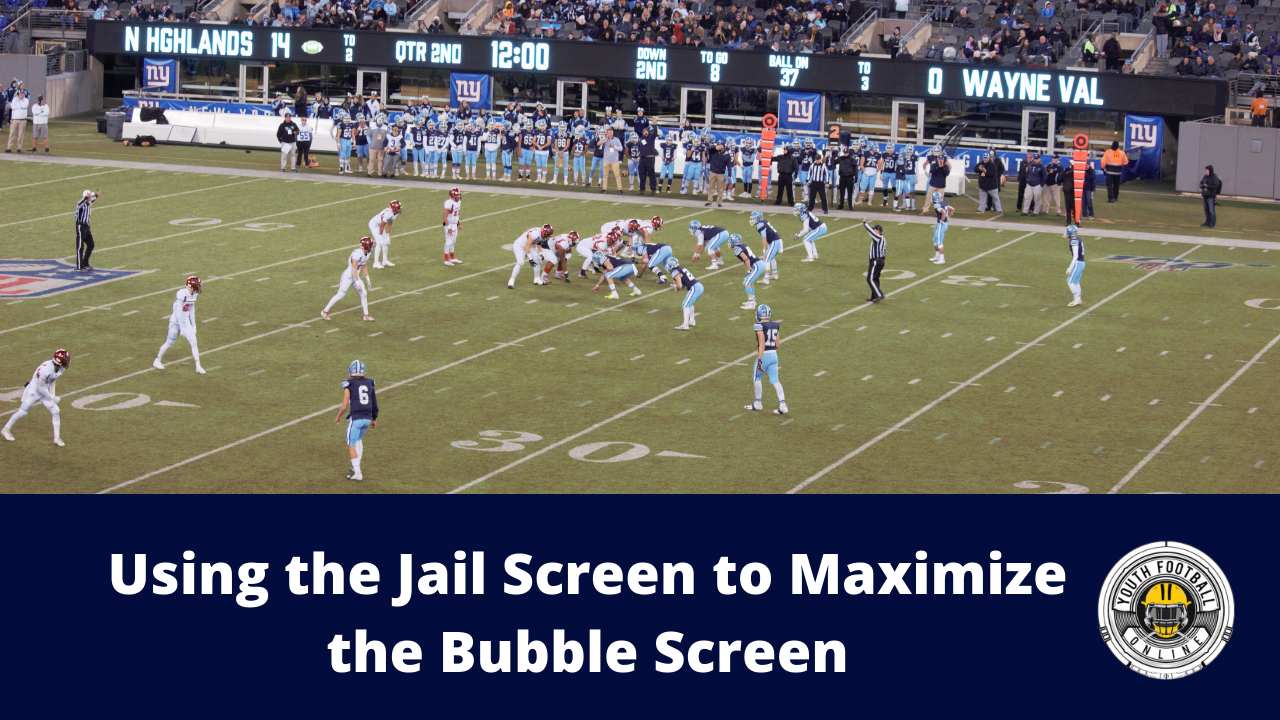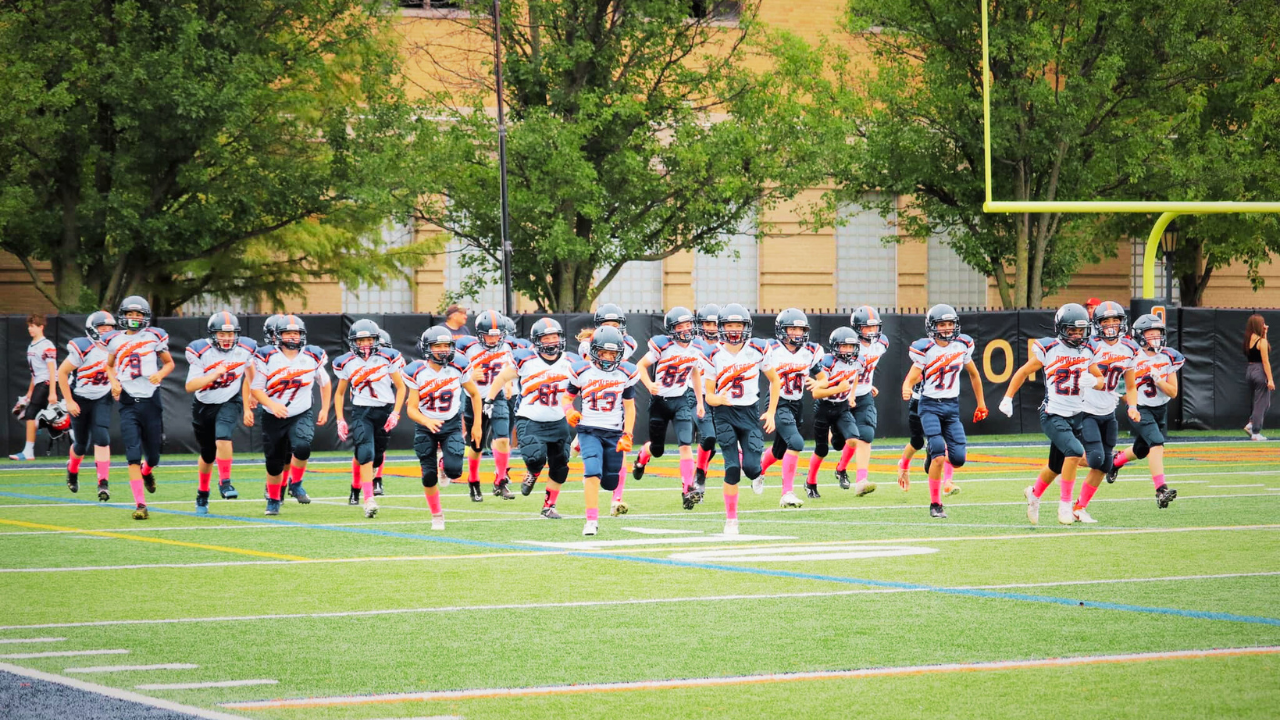Using the Jail Screen to Maximize the Bubble Screen

Most offenses in today’s game are looking to spread out the defense and then take advantage of where they have a numbers advantage. One of the most popular ways to do this is with the Bubble route. While this can be a great way to take advantage of a numbers advantage, if it is the only exterior route that the offense runs it is easy for the defense to take away the play. Therefore it’s important to have multiple exterior routes to take advantage of the defensive coverage.
Using the Jail Screen to Maximize the Bubble Screen
The premise of the Bubble route is to get the ball to an athlete in space. This works best when the defense has one player defending the flat area. For the Bubble route to be effective the outside receiver needs to block the defender so the inside receiver can catch the ball and gain yards. The play isn’t designed to be a touchdown every time it is thrown, but if it is thrown against a single flat defender the receiver should catch the ball and gain at least three yards before coming into contact with a Cornerback or Safety. At that stage if he can evade the defender he can score, if not the offense will live with a gain of 3-5 yards.

Defenses have started to understand the numbering system and how it affects their structure. They know they must stop the bubble but also know that if they put an extra defender in the flats to defend the bubble, they are now susceptible to the run. Many defenses have moved to attempting to put a defender in the flat whose primary job is to stop the bubble and then drop into pass coverage. Many times, this will be a defender who either lines up in front of the outside receiver or between the inside and outside receiver. If this man can shut down the bubble, he tilts the numbers advantage back to the defense.
To maintain the numbers, advantage the offense must find a way to get the ball to the exterior when there is just one defender. The solution is to utilize the Jail Route. The Jail Route is the mirror image of the Bubble. Instead of the inside receiver catching the ball moving towards the outside, the exterior receiver will catch the ball moving inside and then press to get the ball back to the sideline. Now that the exterior receiver is getting the ball, so the inside receiver is responsible for blocking the flat player.
There are a few key differences in the Jail route that the receiver must master for it to be an effective route. First, he needs to push down field for 3 steps. It’s critical that he gets the deep defender dropping. If the deep defender does not respect the deep threat he will come downhill and make the tackle. The next key coaching point is to have the receiver come tight to the block if he has man coverage. He is responsible for coming tight to the block similar to a basketball player coming off a pick. If he leaves too much space the defender will be able to get under the block and make a play on the ball.
The final coaching point is that once the receiver catches the ball, he needs to get vertical and bend towards the sideline. Young receivers will feel the linebacker coming towards them and try to juke towards the middle of the field. What they forget about is that the rest of the defense is behind the linebacker and coming to make a big tackle or force a fumble. Instead the receiver needs to catch the ball and try to outrun the defender towards the sideline. If he is able to get past the linebacker’s tackle, he should be one on one with the deep defender and is a missed tackle away from a Touchdown.
Related Content: Running Back Slip Screen
The role of the blocking receiver is critical. He must get a body on the flat defender. The Jail route works best when the defender is outside of the interior receiver which gives the blocker leverage on the defender. We tell our blockers that they are responsible for the up-field shoulder. While it’s great if they block the whole man, they must be able to get a hand on the upfield shoulder to open up the lane to the sideline. If they are able to block the up-field shoulder the outside receivers coming tight to the block should take care of the downfield shoulder.
It is important to leave the defense in a state of surprise. When defenders know what to expect they can execute their assignment easier. By presenting multiple exterior routes the defense does not know what to expect and must slow down their reads.










